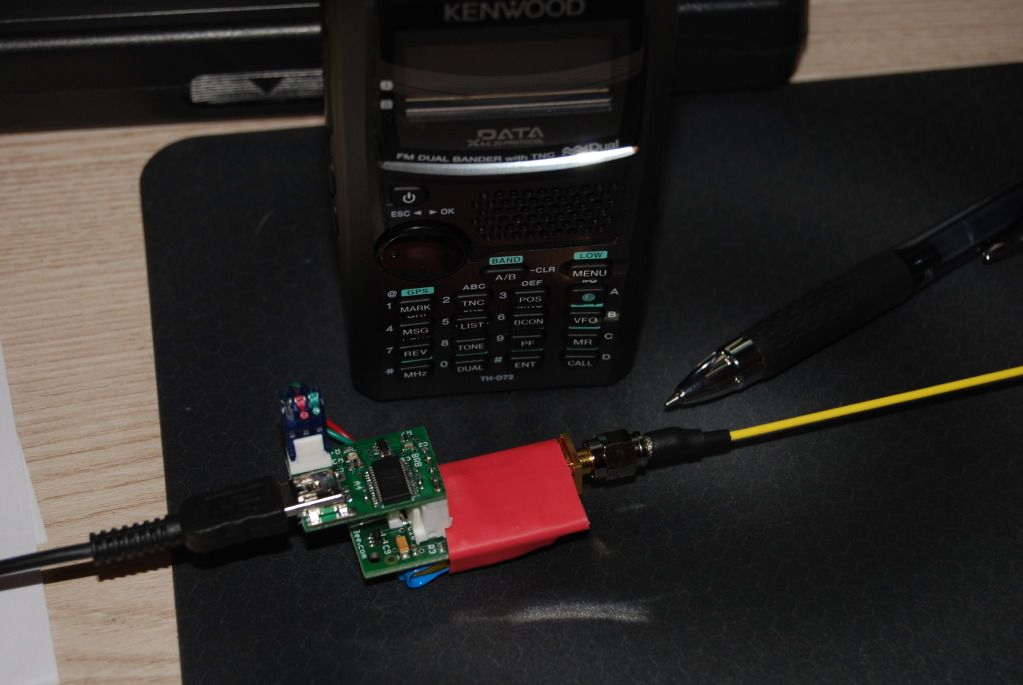Windeavor
Well-Known Member
- Joined
- Mar 7, 2012
- Messages
- 159
- Reaction score
- 0
Just received the 70cm BRB beacon transmitter. Charged up battery via USB which only took about 1.5 hours. Installed software on computer, powered up unit and connected USB interface. Computer defaulted USB serial port to COM 5. Software for BRB only goes to COM 4 so used COM 2 which was available on my computer. Selected "Read" and the software downloaded all the data from the transmitter. Very cool! Greg even configured my HAM license onto the transmitter prior to shipping. Made some changes and selected "Write" to send data back to the transmitter which it performed successfully.
Once powered on the transmitter transmits my HAM license data via Morse every few minutes to identify who is using the transmitter which is required by FCC. I left the transmit interval and length default but changed my broadcast frequency a bit. Every 5 seconds my Kenwood TH-D72 receives the signal. My best reception is -.025 offset from the programmed freq. So transmitter is configured to broadcast at 135.500 MHz and I hear it best tuned to 135.475. Programmed my radio to step up or down .005 MHz on every click of the knob for finer tuning. Pic below shows the USB adapter connected to the transmitter and is charging the battery. Optional SMA antenna connected to transmitter. The USB board disconnects from the transmitter before deployment time. Transmitter is super light weight and very compact.

Took BRB transmitter to the park and set it up as far away as possible. With a 7 element Arrow 70cm Yagi antenna on the Kenwood radio I set the squelch wide open and tuned in 135.475. Came in loud and clear. Turned the freq down until the radio was just able to detect the transmitter signal on the signal meter. This made finding the strongest signal and direction easy. Walked toward strongest signal and as the transmitter gets closer the signal meter increases. Turned the freq down again until it just registered and continued this method until on the target. My son took the transmitter and hid it a couple more times, and using the same technique had little trouble getting within a few feet of the transmitter itself. Works great and as has been mentioned is actually a fun challenge, but most importantly will be a huge asset in recovering way gone rockets.
Once powered on the transmitter transmits my HAM license data via Morse every few minutes to identify who is using the transmitter which is required by FCC. I left the transmit interval and length default but changed my broadcast frequency a bit. Every 5 seconds my Kenwood TH-D72 receives the signal. My best reception is -.025 offset from the programmed freq. So transmitter is configured to broadcast at 135.500 MHz and I hear it best tuned to 135.475. Programmed my radio to step up or down .005 MHz on every click of the knob for finer tuning. Pic below shows the USB adapter connected to the transmitter and is charging the battery. Optional SMA antenna connected to transmitter. The USB board disconnects from the transmitter before deployment time. Transmitter is super light weight and very compact.

Took BRB transmitter to the park and set it up as far away as possible. With a 7 element Arrow 70cm Yagi antenna on the Kenwood radio I set the squelch wide open and tuned in 135.475. Came in loud and clear. Turned the freq down until the radio was just able to detect the transmitter signal on the signal meter. This made finding the strongest signal and direction easy. Walked toward strongest signal and as the transmitter gets closer the signal meter increases. Turned the freq down again until it just registered and continued this method until on the target. My son took the transmitter and hid it a couple more times, and using the same technique had little trouble getting within a few feet of the transmitter itself. Works great and as has been mentioned is actually a fun challenge, but most importantly will be a huge asset in recovering way gone rockets.





